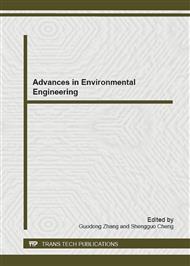p.777
p.781
p.787
p.795
p.807
p.811
p.815
p.820
p.827
The Prediction Model Study of the Hydraulic Fill Elevation in Reclamation Project
Abstract:
The determination of the hydraulic fill elevation is one of the urgent problems in reclamation project. The determination of the hydraulic fill elevation is of extreme importance to the final design elevation in reclamation project. If the hydraulic fill elevation is over high, might waste the hydraulic fill resources, and soil strength would decreased greatly when reduce the topsoil to reach design elevation. If the hydraulic fill elevation is over low, twice-fill is needed leading to great increased coast. In the paper, observational settlement prediction system of dredger fill had been established by research of BP artificial neural network. Finally, the hydraulic fill elevation of reclamation project was suggested reasonably by the observational settlement prediction system.
Info:
Periodical:
Pages:
807-810
Citation:
Online since:
November 2012
Authors:
Price:
Сopyright:
© 2012 Trans Tech Publications Ltd. All Rights Reserved
Share:
Citation:


